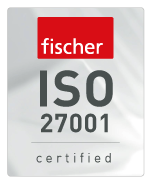Compliance with norms and guidelines is essential in technical writing, as these help to ensure the quality, consistency and comprehensibility of the documents created. This enables users to record information quickly and easily, which in turn increases their satisfaction and security. In order to produce high-quality and legally compliant technical documentation, technical writers should therefore be closely familiar with these norms and guidelines.
Norms are technical standards developed by national or international organizations. They provide clear instructions and specifications for the structuring, content and design of technical documents. Norms such as ISO 82079-1, for example, define principles and general requirements for usage information for products. It is probably the best-known norm in technical writing. In addition, there are also the following other important norms, guidelines and standards.
Norms and guidelines for technical communication
- To DIN EN 82079-1: Principles and general requirements for usage information ( instruction manuals) for products
- To the Machinery Directive: The EU Machinery Directive is a set of regulations for machinery safety within the EU. It contains requirements for the design and construction of machine products.
- To the MDR (Medical Device Regulation): EU regulation for the development, manufacture and monitoring of medical devices in the European Union.
- ANSI Z535.6: Guideline of the American National Standards Institute, which specifies design principles for safety markings
- tekom guideline "Rule-based writing": Provides clear instructions on how technical information should be structured and formulated in documents
- Series of standards ISO/IEC/IEEE 26511 - 26515: Contains requirements for the evaluation, specification, test procedures, documentation and quality assurance of software products
Standards for information processing
- To DITA (Darwin Information Typing Architecture): XML-based framework for structuring, organizing and reusing technical information and content
- To iiRDS Standard (intelligent information Request and Delivery): International standard for the provision of intelligent information, independent of industries or manufacturers.
With CCMS TIM, you can create your technical documentation easily, clearly, and legally compliant according to the most important norms, guidelines, and standards, such as the Machinery Directive and DIN IEC 82079-1. You benefit, for example, from legally compliant and standards-compliant DCL templates for mechanical engineering, plant engineering, and software documentation. The Schematron check included in TIM also helps you to check structural and content rules from norms and editorial guidelines. This saves you valuable time and allows you to focus on value-adding tasks. Learn more about TIM now.


